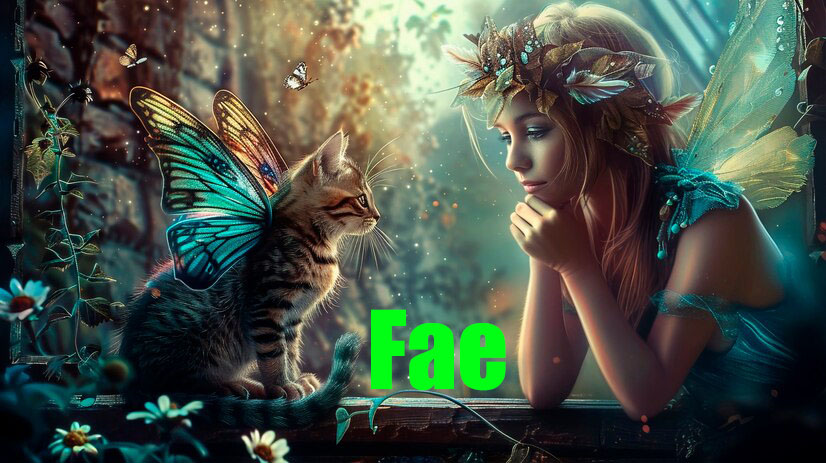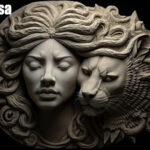The world of fae, or fairies, has captivated human imagination for centuries. These mystical beings, often depicted in folklore and literature, are believed to inhabit an unseen realm parallel to our own. They are known for their ethereal beauty, magical abilities, and sometimes mischievous nature. In this article, we will delve into the fascinating world of fae, exploring their origins, characteristics, and the enduring allure they hold in modern culture.
Origins and Historical Background of Fae
The concept of fae beings originates from ancient folklore and mythology, particularly in Celtic, Norse, and other European traditions. The term “fae” or “fairy” comes from the Latin word “fatum,” meaning fate, which highlights their role as supernatural entities influencing human destiny.
Celtic Mythology
In Celtic mythology, fae are often associated with nature and are believed to inhabit forests, rivers, and other natural landscapes. They are seen as guardians of the natural world, possessing powers to nurture or harm based on their interactions with humans.
Norse Folklore
Norse folklore describes fae beings known as “elves” or “huldufólk” (hidden people). These entities are thought to live in a parallel dimension, occasionally interacting with humans in mysterious ways. Norse myths often depict elves as skilled artisans and magical beings.
Types of Fae
Fae beings come in various forms, each with distinct characteristics and abilities. Some of the most well-known types include:
Pixies
Pixies are small, mischievous fae known for their playful and trickster nature. They are often depicted with wings and are believed to bring good luck or misfortune, depending on their mood.
Sprites
Sprites are ethereal, elemental fae associated with water, air, fire, and earth. They are seen as guardians of the natural elements, often aiding in the balance of nature.
Nymphs
Nymphs are beautiful, graceful fae linked to specific natural features such as rivers, forests, and mountains. They are often depicted as protectors of their respective domains, ensuring their preservation and harmony.
Banshees
Banshees are fae associated with death and the afterlife. In Irish folklore, they are believed to wail or scream to foretell the death of a loved one. Despite their eerie reputation, banshees are considered protectors, guiding souls to the afterlife.
Characteristics and Abilities of Fae
Fae are known for their supernatural abilities and distinctive traits. Some common characteristics include:
Magic and Enchantment
Fae possess potent magical abilities, capable of casting spells, manipulating nature, and enchanting objects or individuals. Their magic is often tied to the natural world, drawing power from the elements.
Shape-Shifting
Many fae can change their form, appearing as animals, humans, or other fantastical creatures. This ability allows them to interact with the human world while remaining concealed.
Immortality and Agelessness
Fae are typically immortal or possess significantly extended lifespans. They do not age in the same way humans do, maintaining their youthful appearance indefinitely.
Mischief and Trickery
Fae are renowned for their playful and sometimes devious nature. They enjoy playing tricks on humans, often leading them astray or causing minor inconveniences. However, their mischief is usually harmless and intended for amusement.
Fae in Literature and Popular Culture
The allure of fae has permeated literature and popular culture for centuries, inspiring countless stories, poems, and artworks.
Classic Literature
In classic literature, fae appear in works such as William Shakespeare’s “A Midsummer Night’s Dream,” where characters like Puck and Oberon embody the whimsical and magical nature of fae. These stories often explore themes of love, nature, and the supernatural.
Modern Fantasy
Modern fantasy literature and media have embraced the fae, featuring them in books, movies, and TV shows. Series like “The Spiderwick Chronicles” and “The Mortal Instruments” bring fae_to life, blending traditional folklore with contemporary storytelling.
Urban Fantasy
In urban fantasy, fae_often inhabit cities, blending their magical world with modern society. This genre explores the coexistence of humans and_fae, highlighting the challenges and adventures that arise from their interactions.
Fae in Modern Paganism and Spirituality
Fae_play a significant role in modern paganism and spirituality. Many people who follow nature-based spiritual paths believe in the existence of fae_and seek to connect with them through rituals, offerings, and meditative practices.
Rituals and Offerings
Practitioners often leave offerings such as milk, honey, or shiny objects in natural settings to honor and appease the_Fae. These gestures are believed to foster positive relationships and invite fae_blessings.
Nature Connection
Connecting with nature is seen as a way to commune with_fae. Spending time in forests, gardens, and other natural environments helps individuals attune to the presence of fae_and experience their magical influence.
Conclusion
The world of fae is a rich tapestry of myth, magic, and mystery. These enchanting beings continue to captivate our imagination, bridging the gap between the mundane and the supernatural. Whether encountered in folklore, literature, or personal spiritual practices, fae_remain timeless symbols of nature’s magic and the enduring power of storytelling.
Frequently Asked Questions (FAQs)
1. What are_fae?
- Fae_or fairies, are mythical beings known for their magical abilities, ethereal beauty, and connection to nature.
2. Where do fae_come from?
- It originate from various folklore and mythological traditions, including Celtic, Norse, and other European cultures.
3. Are fae_real?
- The existence of fae_is a matter of belief and folklore. While there is no scientific evidence, many people find spiritual or symbolic significance in fae_mythology.
4. How can I connect with_fae?
- Connecting with fae_an involve spending time in nature, leaving offerings, and practicing mindfulness to attune to their presence.
5. What is the difference between pixies and fairies?
- Pixies are a specific type of fae_known for their mischievous nature, while “fairy” is a broader term encompassing various types of fae_beings, including pixies.











